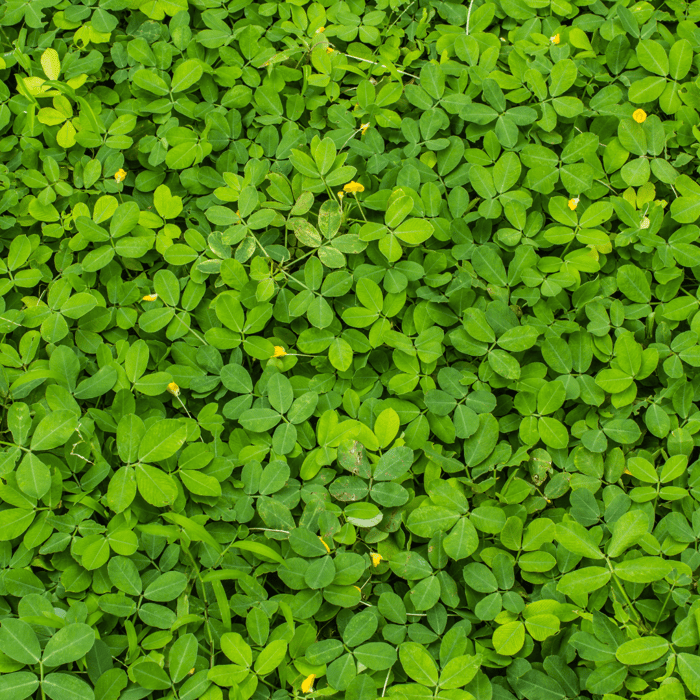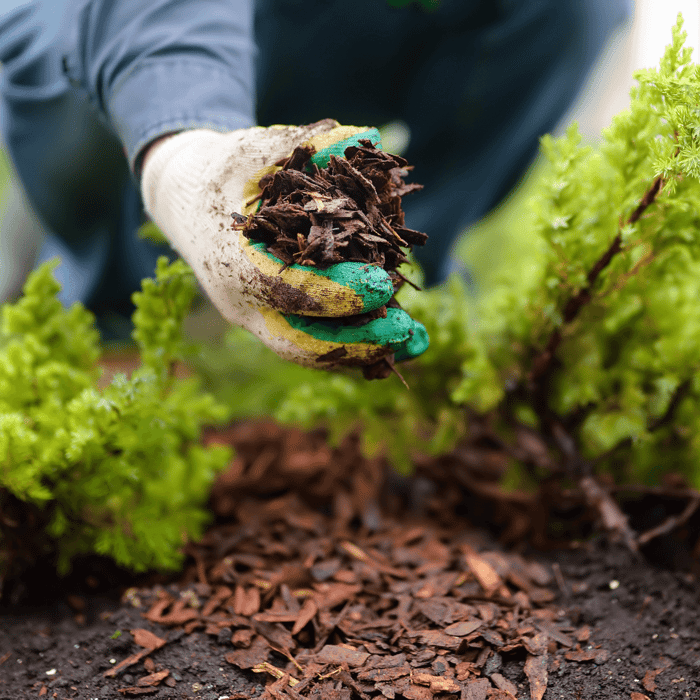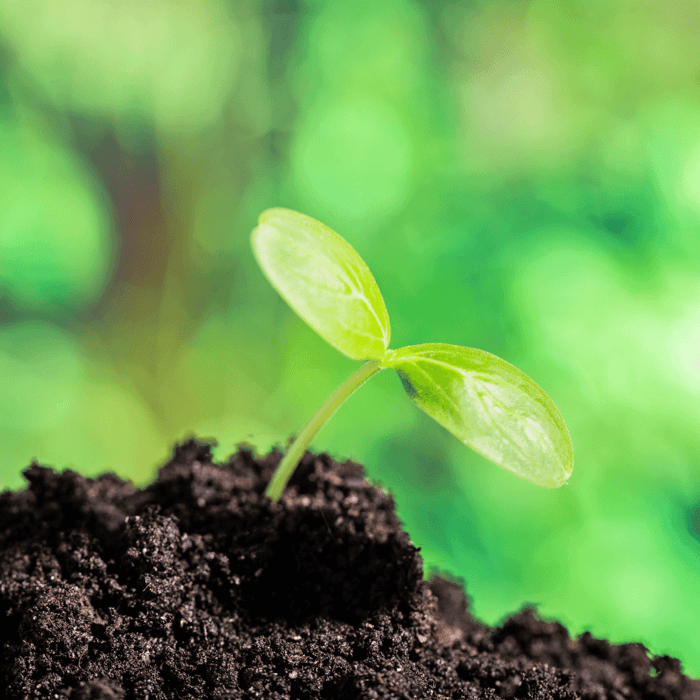Have you ever wondered how to improve the health of your garden soil without using chemical fertilizers?
Gardening can be a fulfilling and rewarding hobby, but it can also be frustrating when you don't see the desired results. Many gardeners turn to chemical fertilizers as a quick fix for poor soil quality, but this is not a sustainable or environmentally friendly solution. There is a better way to improve your garden's soil health, and that is through cover cropping. You might be asking yourself precisely what is cover cropping, so let's dive in.
Background: Cover cropping is a sustainable practice that can help improve soil health and fertility.
Cover cropping involves
planting crops specifically to improve soil health and fertility. Unlike traditional cash crops grown for harvest, cover crops are grown to nourish the soil. They are typically planted between growing seasons or in areas of your garden that are not currently used.
Cover cropping has been around for centuries, but it has gained renewed interest recently due to its sustainability benefits. By using cover crops instead of chemical fertilizers, gardeners can reduce their ecological footprint while still achieving healthy yields. This article will explore cover cropping, its benefits, and how to implement it in your garden.
I will be sharing my opinions on cover cropping and why I believe it is an essential practice for any gardener who wants healthy soil and successful harvests.
We will start by exploring cover cropping and the different types of cover crops available.
Then we will dive into the benefits of cover cropping, including improved soil structure and fertility, reduced erosion and nutrient leaching, and weed suppression. I will share with you some tips on implementing cover cropping in your garden so that you can reap these fantastic benefits.
Popular Herb Seeds for Planting | 35 Variety Pack
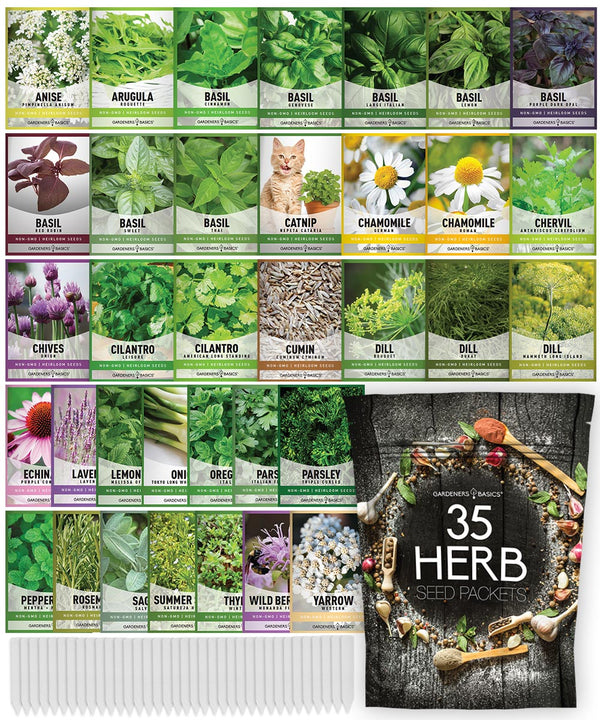
$29.95
$49.95
Heirloom, non-GMO herb seeds for indoor and outdoor home gardens! Introducing our 35 Herb Seeds Variety Pack, the ultimate selection for any herb garden enthusiast! This premium assortment includes heirloom herb seeds that are non-hybrid, open-pollinated, and non-GMO, ensuring you get only… read more
What is Cover Cropping?
Cover cropping is a practice that involves
planting seeds and crops for the sole purpose of improving soil health and fertility. Unlike cash crops, which are grown for profit, cover crops are not harvested and sold. Instead, they are planted between growing seasons to improve the soil's physical and biological properties.
Types of Cover Crops
Cover crops come in different types, each with unique benefits to offer. Legumes, such as clover and peas, help fix nitrogen in the soil.
Nitrogen is a vital nutrient that plants need for growth, but it is often lacking in many soils. By fixing nitrogen from the air into the soil, legumes help replenish this essential nutrient.
Grasses like rye and wheat add organic matter to the soil when decomposing. Organic matter improves water retention and aeration while providing food for beneficial microorganisms in the soil.
Brassicas, like
radishes and
turnips, have taproots that break up compacted soil by creating channels through which air and water can penetrate. Compacted soils inhibit root growth by limiting oxygen availability, thus breaking up compacted soils and increasing plant growth.
Benefits of Cover Cropping
The benefits of cover cropping extend beyond just improving soil health; it also has environmental advantages too! By reducing erosion and nutrient leaching from runoff into streams or groundwater tables, where it can cause algae blooms or other problems. It also suppresses weeds without chemicals or synthetic herbicides because cover crop plants shade out competitors, so there's less energy available for weed growth.
Cover cropping supports sustainable agriculture since it minimizes chemical inputs such as fertilizers or pesticides while increasing organic matter content in soils over time by adding biomass annually through green manure production from those areas covered by the crops. The organic matter increases microbial activity, which improves soil structure and fertility.
This means better soil with less erosion, stronger roots, healthier plants, and more sustainable farming practices in the long run. Cover cropping is an excellent practice for gardeners and farmers who want to improve their soil health and the environment.
It's a sustainable way of farming that benefits both the farmer and the community while providing tangible economic benefits from improved yields. By planting cover crops with different properties, such as legumes or grasses, between plantings of cash crops like vegetables or fruits,
you can create a thriving garden ecosystem rich in nutrients without depleting its resources.
How to Implement Cover Cropping in Your Garden
Preparing Your Soil
Your soil is the foundation of your garden, and without proper preparation, even the best cover crops won't be able to make a difference. Before planting your cover crops, test your soil's pH levels. This will give you an idea of which plants will grow best in your soil and whether or not you'll need to amend it with lime or other nutrients.
Next, remove any existing plants or weeds from the area where you plan on planting your cover crop. This is important because weeds can compete with your cover crop for nutrients and water.
Removing them beforehand reduces the chance of weed seeds sprouting up and stealing vital resources from your cover crops. Loosen the top layer of soil with a hoe or rake.
This helps break up any compacted soil that may prevent water and oxygen from reaching the roots of your cover crops. The more loose and aerated your soil is, the better chance your cover crops have to thrive.
Selecting Your Cover Crops
The selection process for choosing the right cover crop for your garden can be overwhelming due to the many options available. However, by keeping a few things in mind, making a decision becomes much more accessible.
Firstly, consider what issues you're trying to address in your garden. If you have poor soil fertility and want to add nitrogen back into it naturally, then legumes such as clover are ideal because they fix nitrogen into the soil; if you're trying to break up compacted soil, then brassicas like radishes or turnips are perfect as they penetrate deep into soils; while grasses like rye can help protect against erosion thanks to their deep rooting systems.
When selecting your cover crops, also think about your area's climate and growing conditions. Some cover crops may not thrive in hot or dry climates, while others may not do well in areas with excessive moisture.
Planting and Maintenance
After preparing your soil and selecting your cover crop, it's time to plant! Follow the instructions on the
seed packet for optimal planting depth and spacing.
Depending on the type of cover crop you choose, you may also need to inoculate seeds with beneficial bacteria before planting. Maintenance of your cover crop is minimal once it has been established.
Water as needed, but be mindful not to overwater, as this can cause root rot. Cover crops generally require very little fertilizer or additional care besides regular watering.
The Benefits of Cover Cropping
Cover cropping has numerous benefits for both the environment and gardeners alike. Firstly, they improve soil structure by adding organic matter, which makes the soil more fertile while also reducing weed growth; secondly, they suppress weeds; thirdly, they reduce erosion thanks to their deep rooting systems, which hold the soil together; fourthly, they make soils more resistant to droughts - an important aspect if you have a garden that's exposed to full sun all day; finally they provide habitat for beneficial insects which can help control pests and improve pollination rates.
Seed Safe Survival Seed Kit - 35 Variety Pack
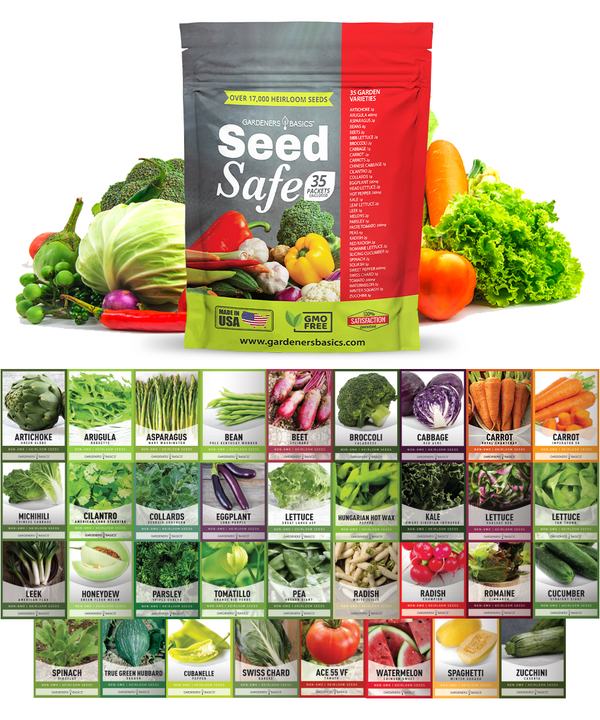
$29.95
$49.95
Seed Safe Survival Seed Kit: The Ultimate Heirloom Collection for Self-Sufficient Gardening Introducing the Seed Safe - 35 Varieties of Heirloom Vegetable, Herb, and Fruit Seeds, the ultimate solution for gardeners who want to secure a bountiful future harvest. This… read more
Conclusion
Cover cropping is a simple yet effective way to improve the health of your garden's soil without resorting to harsh chemical fertilizers or pesticides. By taking the time to properly prepare your soil, select the right cover crop for your needs, and maintain it throughout its growth cycle, you'll be rewarded with healthier plants, reduced environmental impact from runoff (and other sources), and a more sustainable garden ecosystem overall.
If done correctly, cover cropping can be a highly rewarding experience that benefits your garden and the environment. So why not try it and see its positive impact on your little corner of the world?
 Frequently Asked Questions about What is Cover Cropping for Gardens
Frequently Asked Questions about What is Cover Cropping for Gardens
What is cover cropping?
Cover cropping is the practice of growing specific plants in your garden to improve soil health, suppress weeds, and enhance overall garden productivity. Cover crops are typically planted during the off-season or between harvests, acting as a "living mulch" that provides multiple benefits to the soil and the garden ecosystem.
What are the benefits of cover cropping?
Cover cropping offers several benefits, including:
- Improved soil fertility by adding organic matter and nutrients
- Enhanced soil structure, aeration, and water infiltration
- Reduced soil erosion and compaction
- Weed suppression through competition for light, water, and nutrients
- Pest and disease control by attracting beneficial insects and disrupting pest life cycles
- Increased biodiversity and enhanced ecosystem services
Which plants make good cover crops?
There are various cover crop options, and the ideal choice depends on your specific garden conditions and goals. Some popular cover crops include:
- Legumes: clover, peas, vetch, and beans (for nitrogen fixation)
- Grasses: ryegrass, oats, and barley (for biomass production and weed suppression)
- Brassicas: mustard, radishes, and turnips (for biofumigation and pest control)
- Broadleaf plants: buckwheat and phacelia (for pollinator attraction and quick soil coverage)
When should I plant cover crops?
Cover crops can be planted anytime during the gardening season when your garden beds are not occupied by your main crops. Common planting times include:
- Late summer or early fall, after harvesting summer crops
- Early spring, before planting summer crops
- As an intercrop between rows or in gaps between plants
How do I establish a cover crop in my garden?
To establish a cover crop, remove any weeds and debris by preparing the garden bed. Loosen the soil and broadcast the cover crop seeds evenly over the surface. Lightly rake the soil to cover the seeds, and water the area gently to establish good seed-to-soil contact. Keep the soil moist until germination occurs.
When and how should I terminate the cover crop?
Terminate the cover crop before it goes to seed to prevent it from becoming a weed. Depending on the cover crop species, you can either:
- Mow or cut the plants down, leaving the residue on the soil surface as mulch
- Incorporate the plant material into the soil by tilling or turning it under
- Use a roller crimper to flatten and kill the cover crop without disturbing the soil
Allow the cover crop residue to break down for a few weeks before planting your main crops to ensure the nutrients are available to the new plants.
Can I use cover crops in a small garden or raised bed?
Cover crops, including small gardens and raised beds, can be adapted to any garden size. Choose cover crops well-suited for your space, and consider planting a mix of species to maximize the benefits. In a small garden or raised bed, it may be necessary to hand-pull or cut the cover crop and compost the residue rather than incorporating it into the soil.


 Frequently Asked Questions about What is Cover Cropping for Gardens
Frequently Asked Questions about What is Cover Cropping for Gardens


